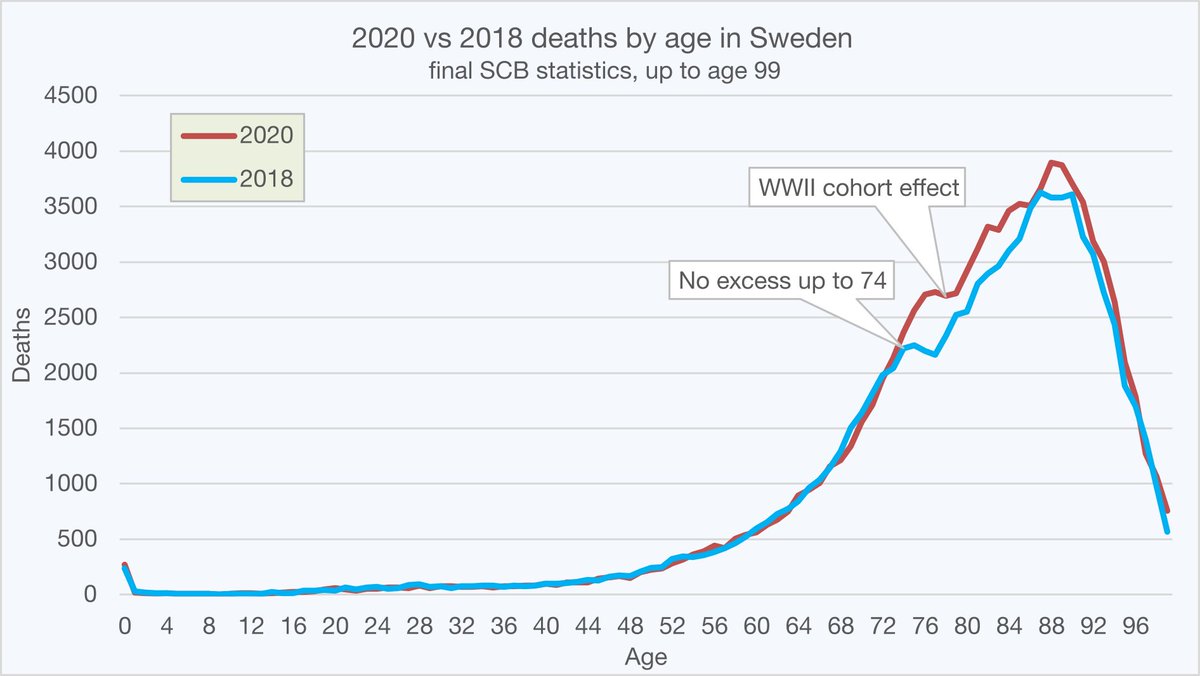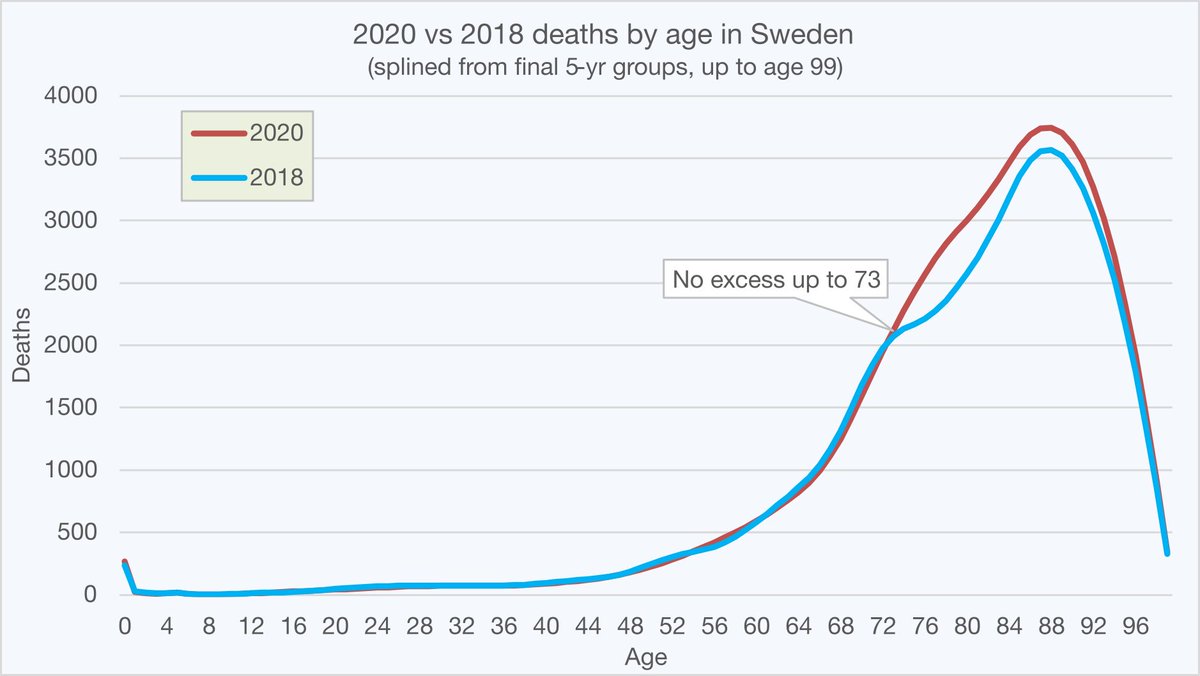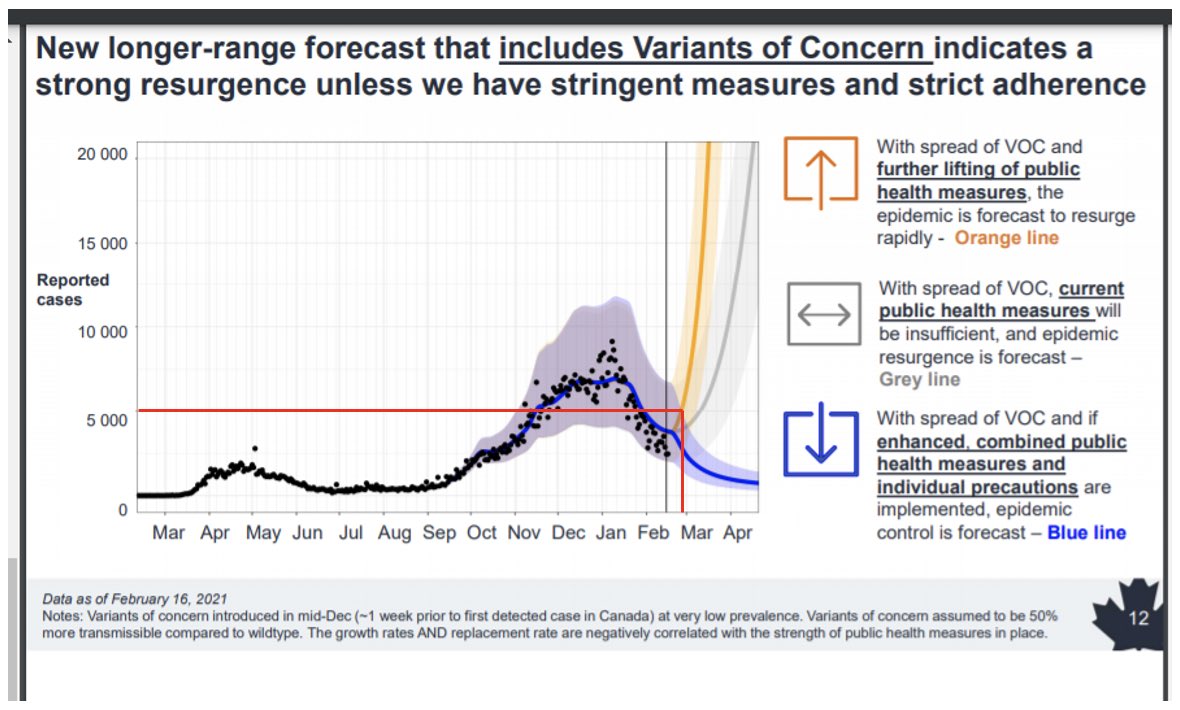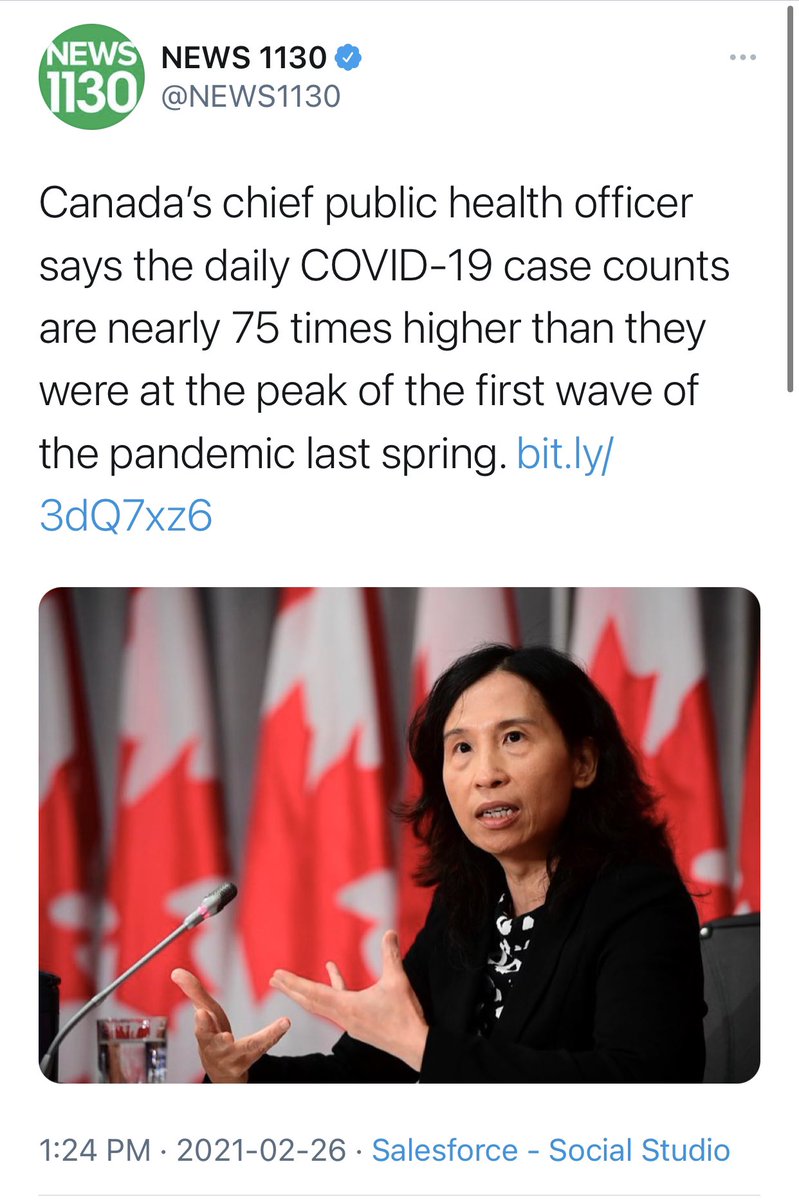This will be my first and possibly last tweet (thread) as I am mostly here to learn. It is prompted by a recent study questioning lockdown efficacy that is getting a lot of attention. It appears people believe it to be the first of its kind, but I have been collecting similar
“there is no evidence that more restrictive nonpharmaceutical interventions (“lockdowns”) contributed substantially to bending the curve of new cases in England, France, Germany, Iran, Italy, the Netherlands, Spain, or the United States in early 2020”
“Inferences on effects of NPIs are non-robust and highly sensitive to model specification. Claimed benefits of lockdown appear grossly exaggerated.”
“government actions such as border closures, full lockdowns, and a high rate of COVID-19 testing were not associated with statistically significant reductions in the number of critical cases or overall mortality”
“Official data from Germany’s RKI agency suggest strongly that the spread of the coronavirus in Germany receded autonomously, before any interventions become effective”
“the decline in infections in England...began before full lockdown…[S]uch a scenario would be consistent with...Sweden, which began its decline in fatal infections shortly after the UK, but did so on the basis of measures well short of full lockdown”
“the UK lockdown was both superfluous (it did not prevent an otherwise explosive behavior of the spread of the coronavirus) and ineffective (it did not slow down the death growth rate visibly).”
“Given that the evidence reveals that the Corona disease declines even without a complete lockdown, it is recommendable to reverse the current policy and remove
the lockdown”
“stay at home orders, closure of all non-essential businesses and requiring the wearing of facemasks or coverings in public was not associated with any independent additional impact”
“these strategies might not have saved any life in western Europe. We also show that neighboring countries applying less restrictive social distancing measures … experience a very similar time evolution of the epidemic.”
“the model does not support [the] estimate that lockdown reduced the case reproduction number R by 81% or that more than three million deaths were averted by non-pharmaceutical interventions.”
“The case of Sweden, where the authors find the reduction in transmission to have been only moderately weaker than in other countries despite no lockdown having occurred, is prima facie evidence”
“general social distancing was also projected to reduce the number of cases but increase the total number of deaths compared with social distancing of over 70 only”
“Strategies that minimise deaths involve the infected fraction primarily being in the
“results presented in the report suggested that the addition of interventions restricting younger people
“We show that [lockdown] is modestly superior in saving lives compared to [focused protection], but with tremendous costs to prevent one case of death. This might result in overwhelming economic effects that are expected to increase future death toll”
“For pathogens that inflict greater morbidity at older ages, interventions that reduce but do not eliminate exposure can paradoxically increase the number of cases of severe disease by shifting the burden of infection toward older individuals”
“Current policy can be misdirected and can therefore have long and even short-term negative effects on human welfare and thus result in not actually minimizing death rates (incorporating externalities), especially in the long run.”
“For example, the data…shows a decrease in infection rates after countries eased...lockdowns with >99% statistical significance. Indeed...infection rates have declined after reopening even after allowing for an appropriate measurement lag.
“restrictions imposed by the pandemic (eg, stay-at-home orders) could claim lives indirectly through delayed care for acute emergencies, exacerbations of chronic diseases, and psychological distress (eg, drug overdoses).”
“In 14 states, more than 50%
“We found that 180-day of mandatory isolations to healthy <60 (ie schools and workplaces closed) produces more final deaths if the vaccination date is later than (Madrid: Feb 23 2021; Catalonia: Dec 28 2020; Paris: Jan 14 2021; London: Jan 22 2021)”
“Comparing weekly mortality in 24 European countries, the findings in this paper suggest that more severe lockdown policies have not been associated with lower mortality. In other words, the lockdowns have not worked as intended”
“Our findings … further raise doubt about the importance in NPI’s (lockdown policies in particular) in accounting for the evolution of COVID-19 transmission rates over time and across locations”
“[the] President...has flatly denied the seriousness of the pandemic, refusing to impose a lockdown, close schools, or cancel mass events…Yet the country’s death rate is among the lowest in Europe-just over 700 in a population of 9.5 million”
“living with children 0-11 years was not associated with increased risks of recorded SARS-CoV-2 infection, COVID-19 related hospital or ICU admission but was associated with reduced risk of COVID-19 death (HR 0.75, 95%CI 0.62-0.92).”
More from Category c19

2/: The interview is significant because @c_drosten made totally sane statements back then that follow the principle of common sense. Considering his involvement in the "genesis of the current pandemic", his assertions appear in an entirely different
The genesis of a pandemic.
— Pace \U0001f642 (@theotherphilipp) February 25, 2021
The #Corona crisis began with a panopticon of absurd events, improbable coincidences and outright lies.
Time for a review of the impossibilities.
A thread \U0001f9f5 pic.twitter.com/PLbETVv2p8
3/: In 2014, for instance, washing the hands was sufficient against being infected by coronaviruses. Several years he demands measures that destroy national economies and social life worldwide.
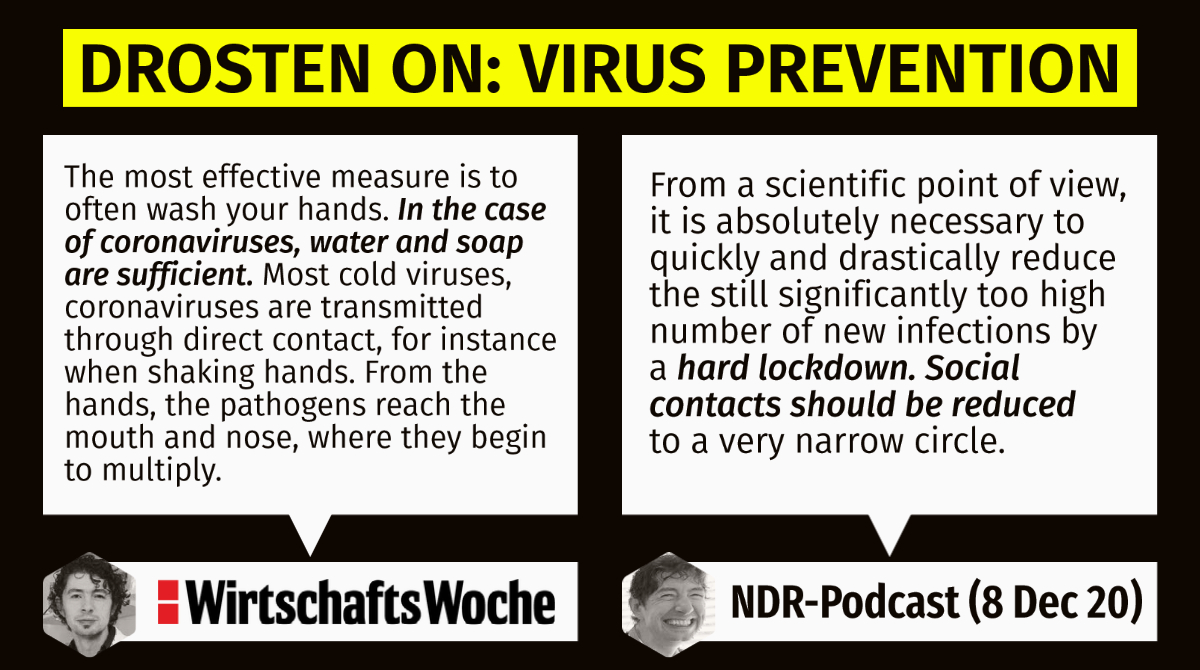
4/: Young @c_drosten also severely criticized the fact that Saudi Arabia used the PCR method to detect potential infections. From his point of view, that specific method could lead to many irrelevant cases. Nowadays, his view shifted his opinion towards 'collective punishment'.
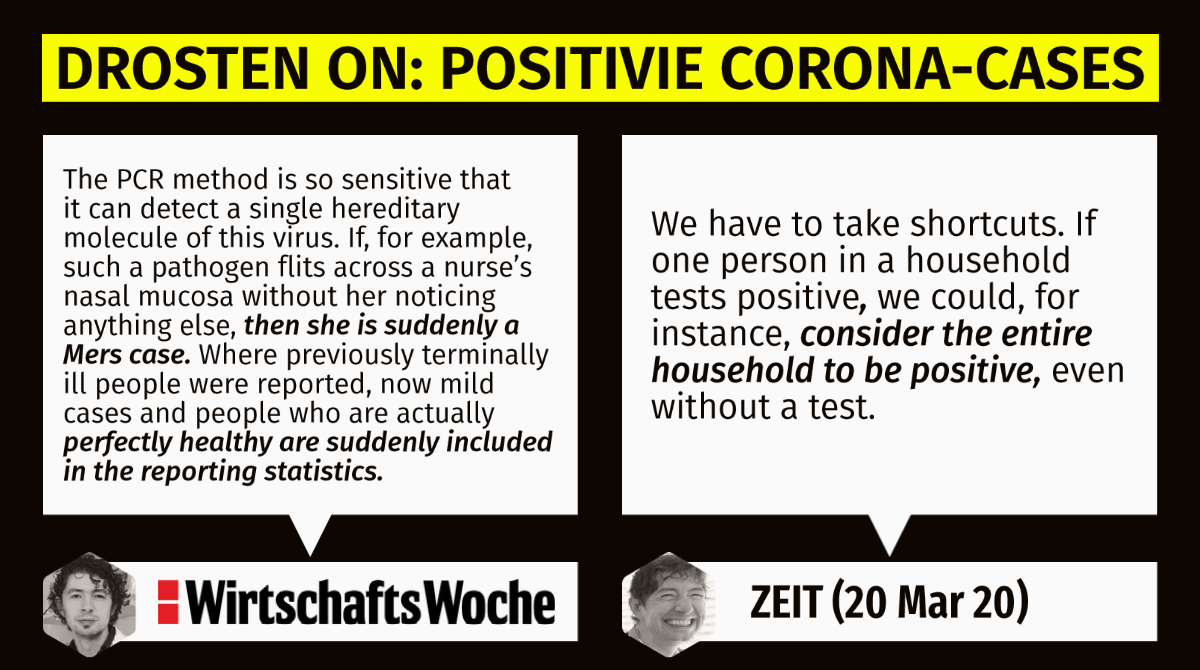
5/: Whereas he demands "testing, testing, testing" nowadays and spreads panic and fear via (social) media, he heavily condemned that behaviour of Saudi media in 2014. On top of that, he expressed his concern that medial panic could increase the number of lab tests significantly.
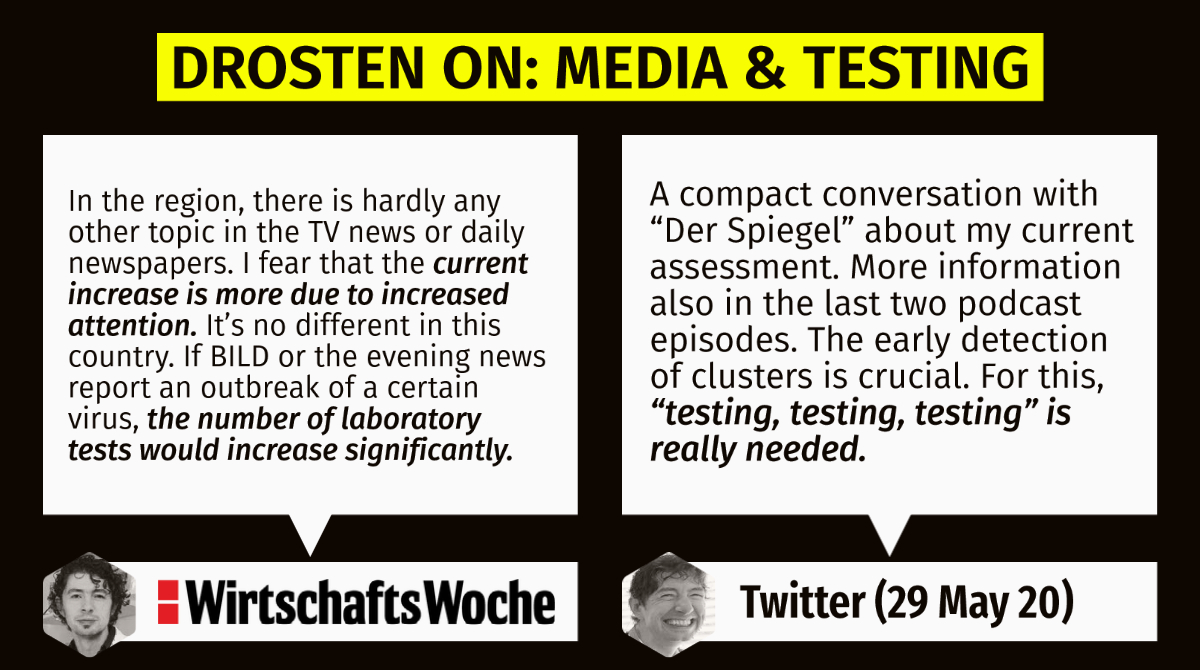
A paper from 2016 shows that prion and prion-like proteins can also spread and propagate from cell to cell through macropinocytosis. It is also
2) noted that the Spike Protein of SARS-CoV-2 can enter cells through macropinocytosis, without the presence of the entire virion. Given the recent Tweet to me by @endocdoc, where he recently saw a patient develop Creutzfeld-Jakob after COVID-19, the extant paper showing CJD
3) CJD after COVID-19 infection and the recent death of the head of Astra-Zeneca research from CJD should be concerning to all. Especially if he gave himself the AZ therapy during Stage 1 or Stage 2 trials. This would give a possible timeframe for onset.
Again, all Spike Protein
4) mRNA and DNA should be paused until long term animal studies can be
5)
https://t.co/PWOgyPoG5d
3/4
https://t.co/WBAnAUO0UU
Finally, this film demonstrates that EVERY SINGLE aspect of the fraudulent "science" used to the sell SARS-2=CoVid fraud was perfected in the 1980s to sell the HIV=AIDS fraud. https://t.co/Gjqo2lGjQw
— Ken McCarthy (@KenMcCarthy) March 10, 2021
You May Also Like
Like company moats, your personal moat should be a competitive advantage that is not only durable—it should also compound over time.
Characteristics of a personal moat below:
I'm increasingly interested in the idea of "personal moats" in the context of careers.
— Erik Torenberg (@eriktorenberg) November 22, 2018
Moats should be:
- Hard to learn and hard to do (but perhaps easier for you)
- Skills that are rare and valuable
- Legible
- Compounding over time
- Unique to your own talents & interests https://t.co/bB3k1YcH5b
2/ Like a company moat, you want to build career capital while you sleep.
As Andrew Chen noted:
People talk about \u201cpassive income\u201d a lot but not about \u201cpassive social capital\u201d or \u201cpassive networking\u201d or \u201cpassive knowledge gaining\u201d but that\u2019s what you can architect if you have a thing and it grows over time without intensive constant effort to sustain it
— Andrew Chen (@andrewchen) November 22, 2018
3/ You don’t want to build a competitive advantage that is fleeting or that will get commoditized
Things that might get commoditized over time (some longer than
Things that look like moats but likely aren\u2019t or may fade:
— Erik Torenberg (@eriktorenberg) November 22, 2018
- Proprietary networks
- Being something other than one of the best at any tournament style-game
- Many "awards"
- Twitter followers or general reach without "respect"
- Anything that depends on information asymmetry https://t.co/abjxesVIh9
4/ Before the arrival of recorded music, what used to be scarce was the actual music itself — required an in-person artist.
After recorded music, the music itself became abundant and what became scarce was curation, distribution, and self space.
5/ Similarly, in careers, what used to be (more) scarce were things like ideas, money, and exclusive relationships.
In the internet economy, what has become scarce are things like specific knowledge, rare & valuable skills, and great reputations.
Ironies of Luck https://t.co/5BPWGbAxFi
— Morgan Housel (@morganhousel) March 14, 2018
"Luck is the flip side of risk. They are mirrored cousins, driven by the same thing: You are one person in a 7 billion player game, and the accidental impact of other people\u2019s actions can be more consequential than your own."
I’ve always felt that the luckiest people I know had a talent for recognizing circumstances, not of their own making, that were conducive to a favorable outcome and their ability to quickly take advantage of them.
In other words, dumb luck was just that, it required no awareness on the person’s part, whereas “smart” luck involved awareness followed by action before the circumstances changed.
So, was I “lucky” to be born when I was—nothing I had any control over—and that I came of age just as huge databases and computers were advancing to the point where I could use those tools to write “What Works on Wall Street?” Absolutely.
Was I lucky to start my stock market investments near the peak of interest rates which allowed me to spend the majority of my adult life in a falling rate environment? Yup.




